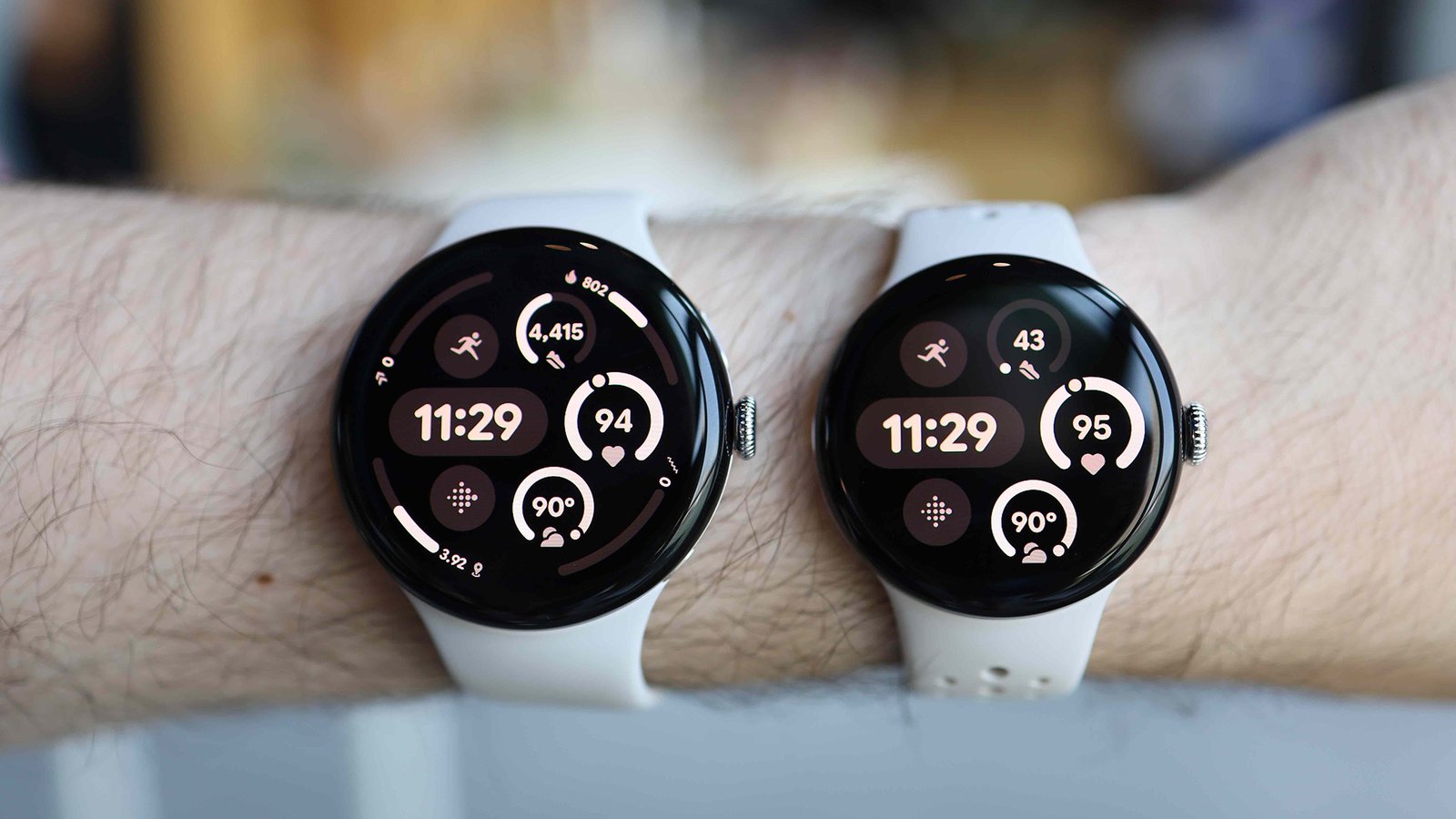LG’s OLED TVs continue to be among the most popular TVs every year thanks to their consistently strong picture quality and the full range of features they provide.
The company’s OLEDs are frequently in the conversation for best TV each year, and while on paper it’s obvious what differences there are between the cheapest and most premium models, how does that translate into real-world viewing?
I recently had the chance to test the flagship LG G5, one of the best OLED TVs of 2025, side-by-side with the entry-level, and far cheaper, LG B5.
The G5, which earned five out of five stars in our LG G5 review, features a new Primary Tandem RGB OLED panel that delivers impressive color and unprecedented brightness levels for an OLED TV. The B5, in comparison, features a standard W-OLED panel with limited brightness.
While the G5 is clearly the superior TV when it comes to specifications and measured performance, just how big a gap is there between these two TVs when they stand side-by-side, and what are you getting for your money? Bear in mind that the 55-inch LG G5 is priced at roughly $2,299 / £2,199 / AU$4,195, while the 55-inch B5 is priced at $1,499 / £1,299 / AU$1,995, a substantial $800 / £900 / AU$3,000 price gap.
The brightness gap
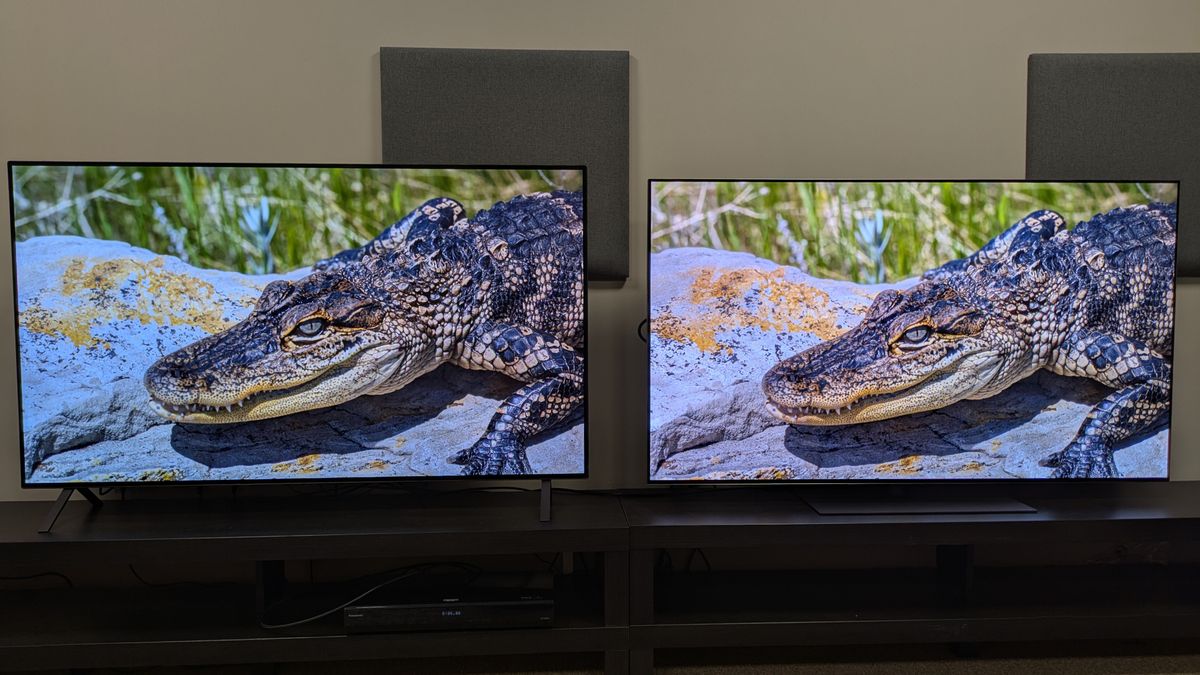
As expected, the biggest difference between the B5 and G5 is brightness. With both TVs in Cinema or Filmmaker Mode, the G5 has a clear brightness advantage, and this generally adds greater visual punch to images.
Now, some numbers. The G5’s peak HDR brightness clocked in at 2,268 nits in Filmmaker Mode when we measured it, whereas the LG B5 hit 668 nits peak HDR brightness in Cinema mode. Fullscreen brightness was 331 nits for the G5 and 131 nits for the B5. Those are huge gaps, and it has an impact on what you’ll see between the two sets.
Watching Wicked, with both TVs in Dolby Vision Filmmaker Mode, the G5’s colors look bolder and more vivid thanks to the TV’s higher brightness. In scenes with beige walls, such as Wicked’s Wizard & I scene, the wall appeared brighter on the G5, and while still accurate on the B5, it looked more muted. Pink flowers, blue uniforms and Elphaba’s green skin appeared more vibrant and detailed on the G5 as well.
Color, contrast and detail
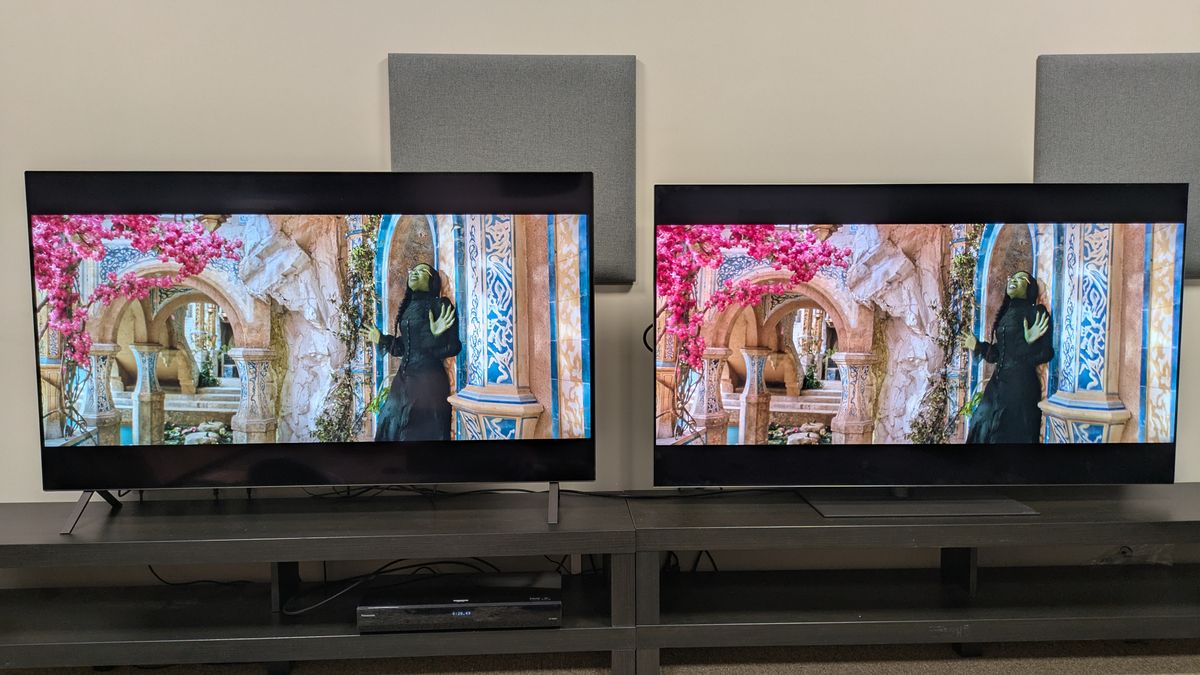
The best OLED TVs are known for delivering spectacular colors and rich contrast, and the G5 and B5 are no exception. I found that both TVs looked excellent with any type of content. What I was surprised at, however, was just how good the LG B5 looked next to the G5. Brightness may be a major factor between these two TVs, but elsewhere, the B5 held its own.
With the same Wizard & I scene from Wicked, the B5 still delivered accurate and rich colors that give the movie an eye-popping quality. No, they weren’t as vivid as on the G5, but they were still brilliant.
When I measured the UHDA-P3 color gamut of the B5 and G5, they scored 99.5% and 99.6% respectively. With such similar results, it’s no wonder the B5 delivered just as striking colors as its more premium sibling. As for the BT.2020 color gamut, the B5 hit 74.85% and the G5 hit 81.3%, so while there is a difference between the two, it’s still a great result for the B5.
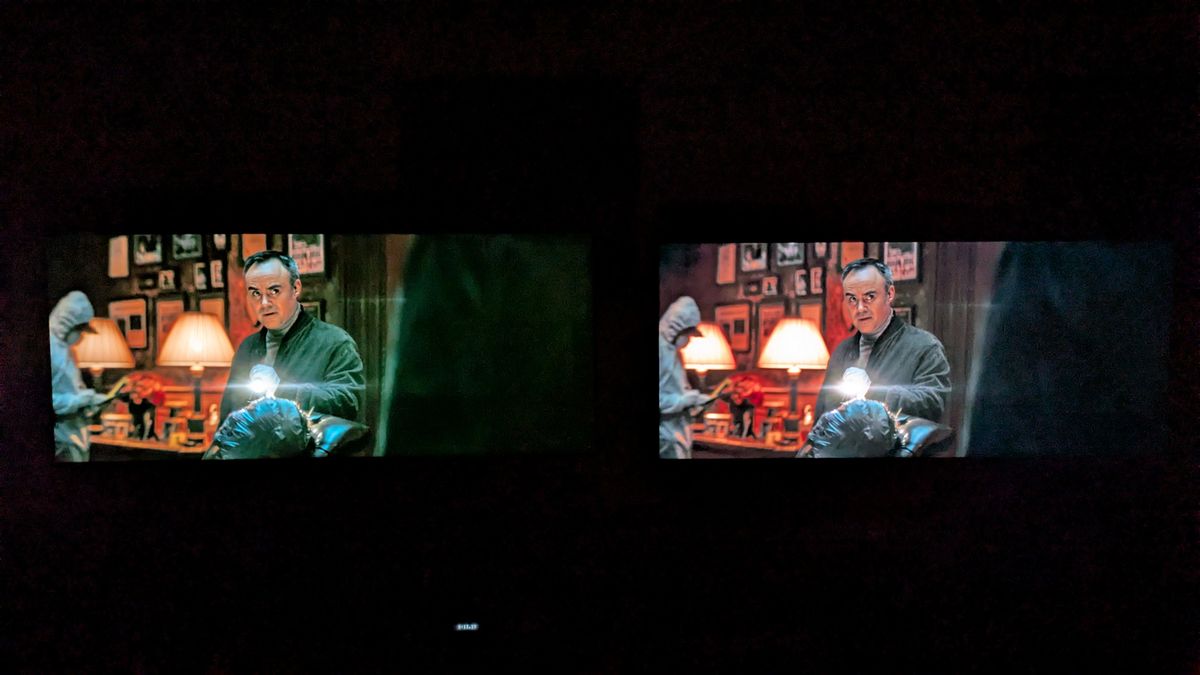
The G5’s higher brightness once again helps with contrast as its brighter highlights provide a greater dynamic range in images. For example, in the opening crime scene from The Batman, lamps and torches punctuate the gloomy, dark surroundings, and the G5’s higher brightness created a wider range between light and dark.
Still, I was surprised at just how good the B5’s contrast was. The scene still had that high contrast feel I look for, with deep black levels balancing well with lighter tones. The same was true of Dark City, where the green clock and neon sign of the automat shimmered against the black background even on the B5’s dimmer screen. When viewed in dimmed lighting conditions (necessary for the B5 with darker scenes), the picture on both TVs was a lot closer than I anticipated.
As you’d expect from an OLED TV, details and textures were lifelike and refined on both the G5 and B5. In demo footage from the Spears & Munsil UHD Benchmark 4K Blu-ray, an owl’s feathers, a crocodile’s scales, and the rocks in a cliffside all looked crisp and true-to-life, taking on a near-3D effect.
Money saved = upgrades?

As I mentioned above, there is a big price difference between the G5 and B5. This is the case across all screen sizes. You can get a 77-inch B5 for the price of a 65-inch G5, so if you’re looking for a bigger screen, the money you saved opting for the B5 will net you a larger TV!
Also, it’s no secret that the built-in speakers on TVs generally aren’t great, and a soundbar has become a common recommendation. The B5 could definitely use a soundbar and although the G5’s sound is better, it still doesn’t match its picture quality. With that price gap, you could easily get some of the best soundbars on the market to pair with your B5, such as the Marshall Heston 120, Sonos Arc Ultra, Samsung HW-Q800D to name a few, and that would give you a more complete cinema experience.
Final thoughts
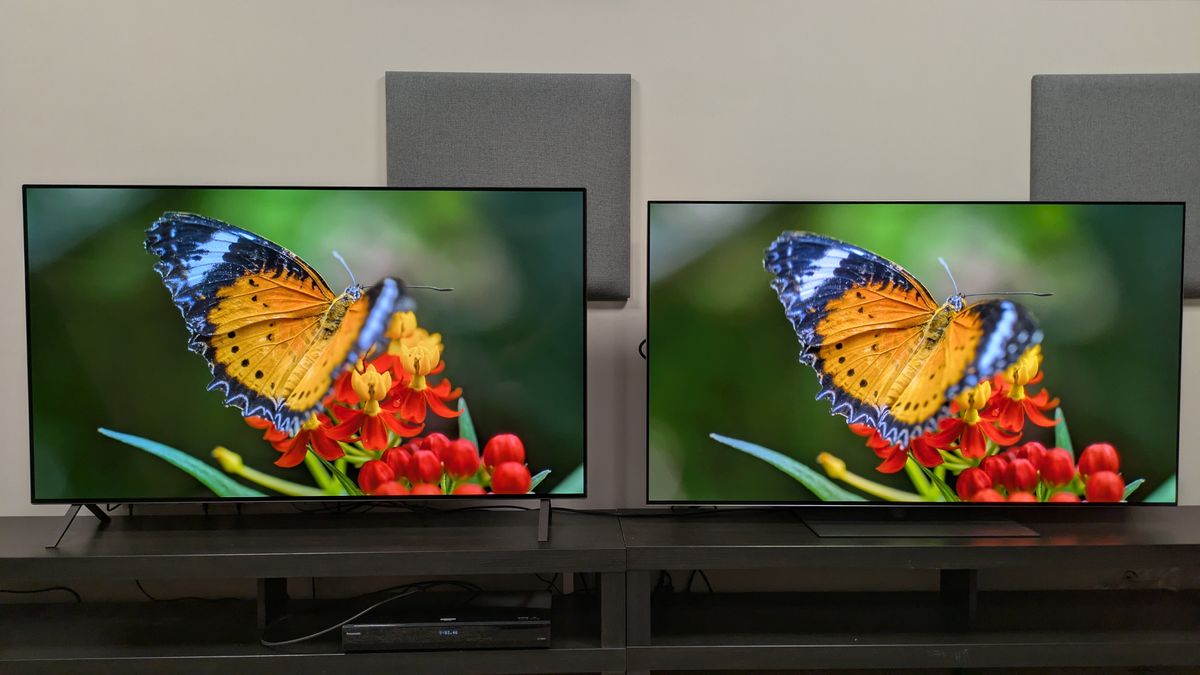
The LG G5 is undeniably the better TV over the LG B5, mainly due to its higher brightness. While the G5 also carries a few more features, such as a 165Hz refresh rate for gaming to the B5’s 120Hz, the B5 still delivers a full suite of features that will keep most users happy.
Ultimately, the B5 doesn’t deliver the same picture quality as the G5, but it’s arguably the better bang for your buck. If you can stretch your budget for the G5, it is, of course, worth it. If you can’t, however, the B5 stands up surprisingly well against its pricier sibling.




